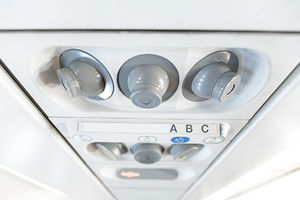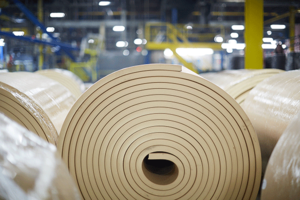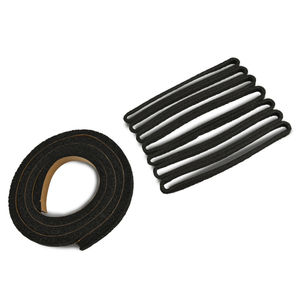 In the aviation industry, the generally accepted standard measurement of cabin noise is in units of dB(SIL), or decibels (dB) expressed in terms of speech interference level (SIL). In aircraft, that SIL is the mathematical average of 1,000; 2,000; and 4,000 cycles per second (Hertz). A major “noisemaker” is the skin of an aluminum aircraft, which creates aerodynamic noise from the transmission of air passing around the fuselage at low frequencies resembling a rumble or roar. Controlling the noise typically requires installing a combination of vibration absorption and sound-damping materials. Aircraft engines are also responsible for the airplane noise you hear, especially during take-off and climb. Noise levels inside an Airbus A321 have actually been reported as approximately 78dB - this is approximately 20 decibels louder than recommended levels for an office building!
In the aviation industry, the generally accepted standard measurement of cabin noise is in units of dB(SIL), or decibels (dB) expressed in terms of speech interference level (SIL). In aircraft, that SIL is the mathematical average of 1,000; 2,000; and 4,000 cycles per second (Hertz). A major “noisemaker” is the skin of an aluminum aircraft, which creates aerodynamic noise from the transmission of air passing around the fuselage at low frequencies resembling a rumble or roar. Controlling the noise typically requires installing a combination of vibration absorption and sound-damping materials. Aircraft engines are also responsible for the airplane noise you hear, especially during take-off and climb. Noise levels inside an Airbus A321 have actually been reported as approximately 78dB - this is approximately 20 decibels louder than recommended levels for an office building!

Commercial aircraft also have other noisy culprits such as the fresh air circulation system, pumps, hydraulics, fans, gears, electric motors, and cooling systems. Let’s also not forget passenger noise, crew drink service in the galley and that boisterous flushing sound coming from the lavatory. Even with these disturbances, aircraft can be made a lot less noisy and there are quite a few engineers, acoustics experts, designers, and the folks at Armacell that are doing their best to make it so.

OEMs need superior products that provide noise reduction, vibration damping, and air and dust sealing. Our wide range of foam solutions meet those needs and are vital components of an aircraft where every piece matters. Multiple ArmaComp™ solutions including ArmaSport® and Monarch® products are on Boeing’s approved source list for various aerospace applications. A number of ArmaSport and EnsoLite® cellular rubber products (NBR/PVC and NBR/PVC/CR blends) have excellent resistance to flame and have been tested to the 12 second vertical burn requirements of FAR 25.853.
Many ArmaSport, EnsoLite, and Monarch products are listed on other aerospace OEM approved source lists such as Lockheed Martin and Northrup Grumman. All these factors make our closed-cell materials an ideal choice for aircraft applications and utilizing advanced technologies in the sky (and on the runway) is a novel idea.
1https://www.ainonline.com/aviation-news/aviation-international-news/2013-12-02/quiet-cabin-no-simple-solution
